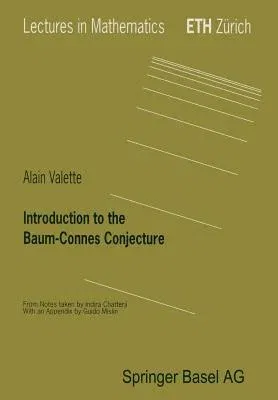Alain Valette
(Author)Introduction to the Baum-Connes Conjecture (2002)Paperback - 2002, 1 April 2002

Qty
1
Turbo
Ships in 2 - 3 days
In Stock
Free Delivery
Cash on Delivery
15 Days
Free Returns
Secure Checkout
Part of Series
Lectures in Mathematics. Eth Zürich
Part of Series
Lectures in Mathematics Eth Zurich
Part of Series
Lectures in Mathematics. Eth Zurich
Print Length
104 pages
Language
English
Publisher
Birkhauser
Date Published
1 Apr 2002
ISBN-10
3764367067
ISBN-13
9783764367060
Description
Product Details
Author:
Book Edition:
2002
Book Format:
Paperback
Country of Origin:
DE
Date Published:
1 April 2002
Dimensions:
23.9 x
17.07 x
0.84 cm
ISBN-10:
3764367067
ISBN-13:
9783764367060
Language:
English
Location:
Basel
Pages:
104
Publisher:
Series:
Weight:
235.87 gm

